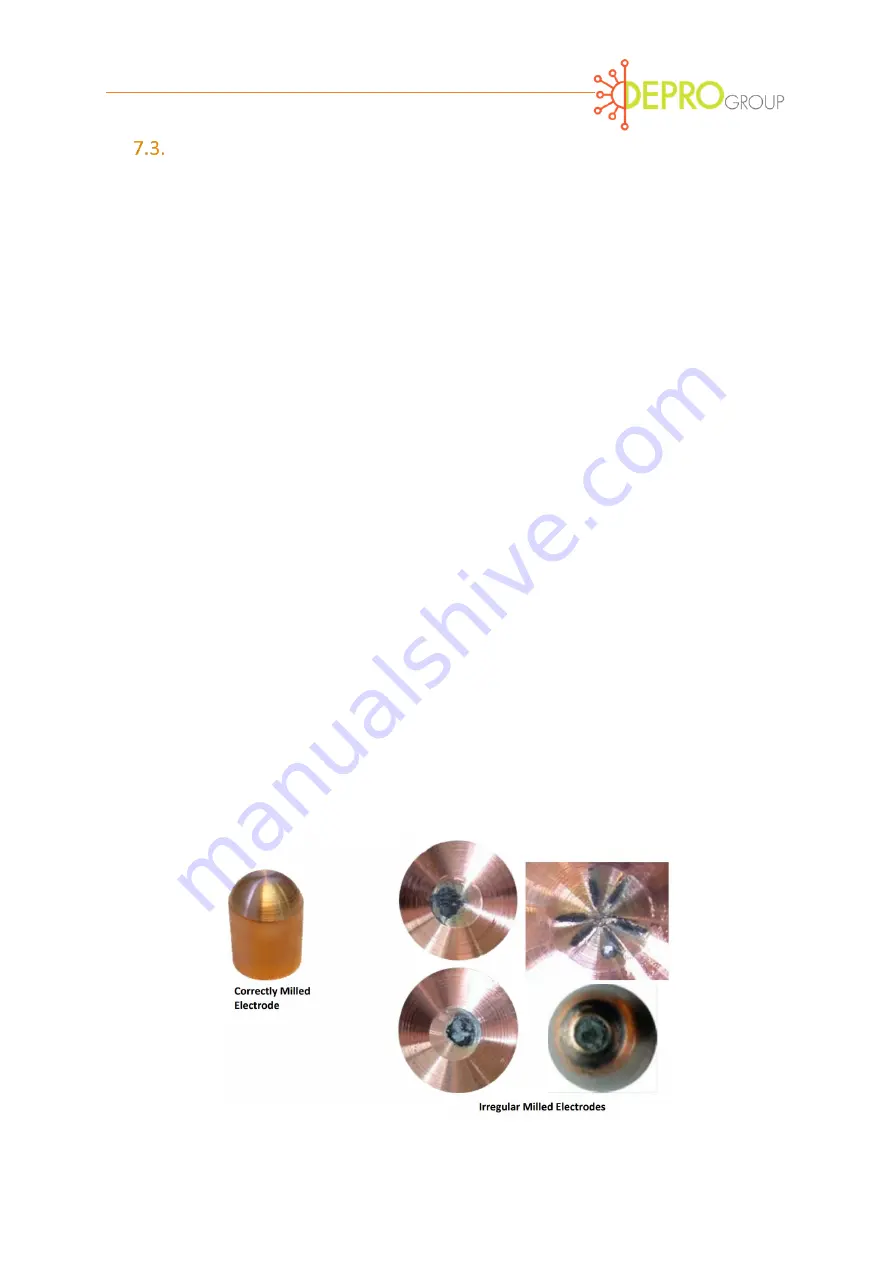
Chip formation and service life of the electrode:
Optimal milling of the electrode is normally achieved when there is a constant milling of the
weld face (e.g. in the case of F16 x 22 is approx. 7 mm), producing a defined area radius, as
well as fine broken particles being produced.
To prevent clogging of the milling tool, it is recommend longer milling times be avoided and
several short milling intervals take place by opening and closing the gun adapters during
milling (e.g. milling twice with 3 rotation rather than once with 6 rotations). The length of the
chips is significantly shorter allowing for easier evacuation and less clogging. The higher the
clamping force, the larger or thicker chips are produced causing increased wear and risk of
clogging.
Perfect geometry of the welding electrodes without residues on the surface can be achieved
by removing only 100-150 μm resulting in improved service life. The following figure shows a
penetration depth of the zinc oxide layer of 140 μm after 400 welds.
Frequent removing of a small amount of material, for example every 50-150 welds, generally
offers a high degree of process reliability with sufficient service life.
Residues of organic tin coatings (zinc oxide) on the electrodes, remaining after the milling, and
may lead to process instabilities. Often there is a hysteresis effect in which the zinc oxide
increases despite milling even more. The active surface is then formed irregular crater-shaped.
From a certain layer thickness, this layer may spontaneously chip off.
Figure 17 Regular and irregular milled electrodes













































